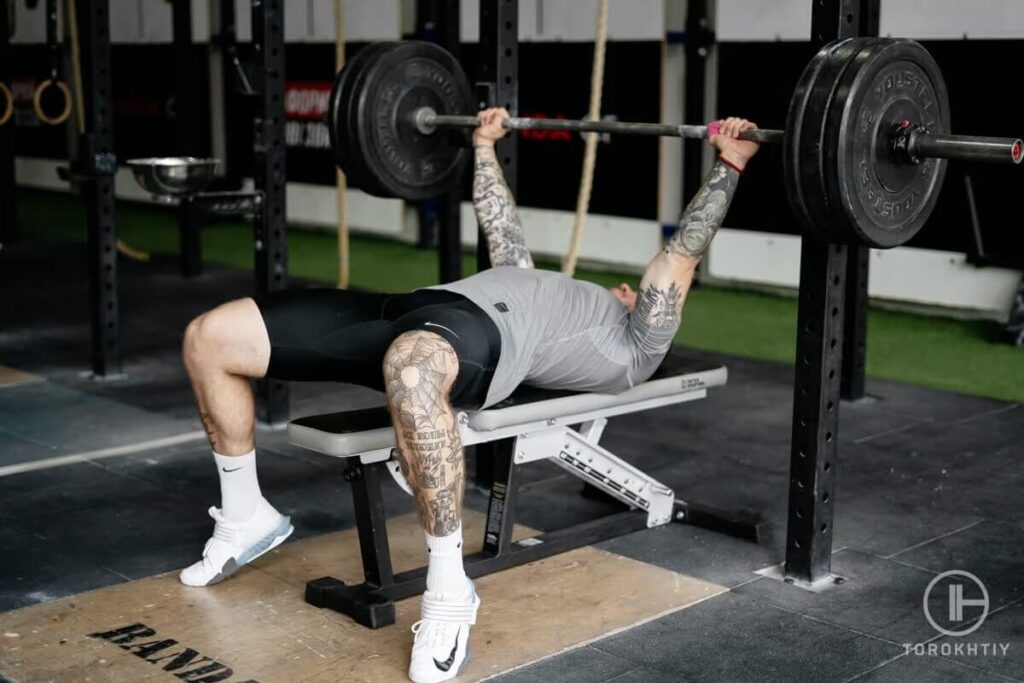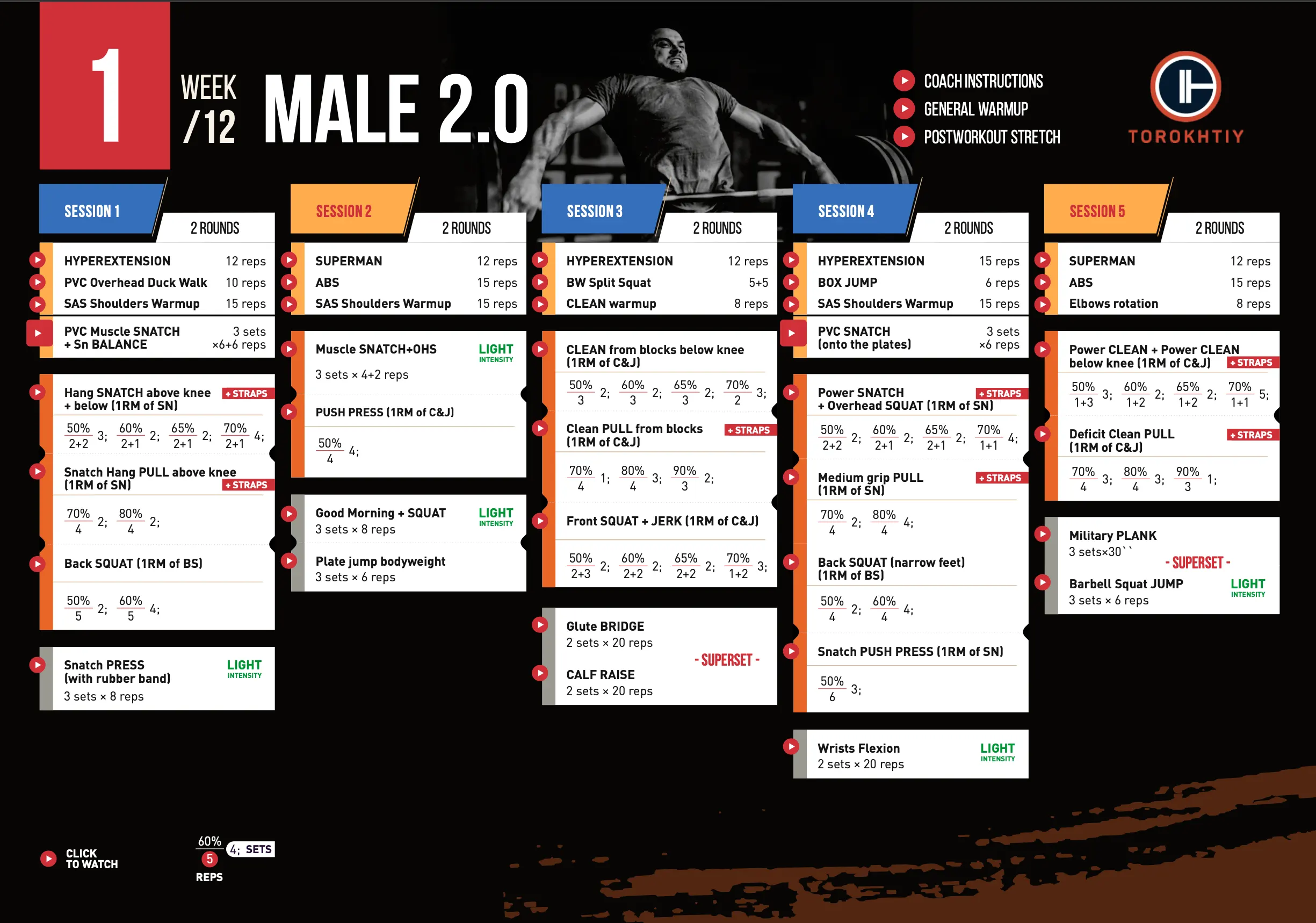Optimal Time For Training: When And Why?
Author:
Unlock your full potential by engaging with our experts and community! Have questions about your fitness journey or looking for expert advice on weightlifting techniques? Don’t hesitate — leave a comment below and Sergii Putsov will provide a personalized answer and insights to help you reach your goals.
Torokhtiy is reader-supported. Some links are affiliate links, and we may earn a commission at no extra cost to you. See our disclosure page for details.

This article also available as audio. Check this out!
Subscribe and listen it anywhere:
Everyone knows that circadian rhythms are a normal characteristic of all living organisms, including humans. These rhythms are due primarily to the light and temperature cycles of the environment, associated with the daily rotation of the Earth around its axis, and are manifested in various processes of the vital activities of the organism.
These rhythms apply to body temperature, hormonal activity, cardiovascular activity, performance, etc. Although the natural rhythm of various functions usually exceeds 24 hours, external synchronizers – day and night shifts, general mode of life, motor activity, nutrition – form a stable circadian rhythm of vital functions.
You may like it:
- Detailed Olympic Weightlifting Program For Beginners
- 12-Week Weightlifting Program For Women (Detailed Example)
- Create Your Olympic Weightlifting Program (Examples Included)
The working capacity and appearance of various physical and mental skills varies markedly depending on the time of day. The highest level of functional capacity of the body is observed from 1-2 PM to 6-8 PM, the lowest from 2 to 5 AM. At the same time, variations can be quite significant. For example, variations in resting heart rate can reach 20-30%. In the early morning hours, the psychomotor capabilities of a person are also significantly reduced.
Follow us!

Free!
Get a 2-week Weightlifting Program as a bonus for the subscription to kickstart your training plan!

Free!
There is a close connection between the temperature of the body and the functionality of athletes as well. But in professional athletes, rhythm can acquire a specific character in connection with the time of training sessions. For example, this difference may not be significant for athletes who are used to training early in the morning. Moreover, prolonged regular training at an earlier time can lead to having rates at 7-8 AM being higher than those registered later in the day or in the evening.
Training at different times of the day has its own characteristics, which you need to know about and always remember. The study of new technical elements is more successful in the first half of the day – from 10 AM to 12 PM. At this time, there is a maximum level of cognitive abilities for the athlete, there is a peak in mood, well-being and mental performance. Peak psychological indicators associated with the maximum level of cortisol and catecholamines is observed in the morning.

Work on the development of speed-strength skills, coordination abilities and joint mobility will be most successful if conducted in the range of 4-6 PM. It is at this time that the highest peak of these motor abilities is observed.
Working on your endurance is recommended for late in the evening – from 4 to 7 PM. At this time, the maximum values of oxygen consumption, pulmonary ventilation, systolic blood volume, cardiac output, and etc. are realized. At the same time, athletes more easily overcome the feeling of fatigue because more intense restorative processes take place. When training twice a day – in the morning and at the end of the day – the maximum capacity for work should be done in the second training session. This information will be useful for functional athletes when planning several workouts per day.
The natural diurnal variations of vegetative functions, undoubtedly leave an impact on the magnitude of variations in the indices of special working capacity. When the time of employment coincides with the physiological peak of your vital activity, the level of working capacity from the point of view of physiological activity proves to be higher in comparison with what is observed when conducting studies at other times.
It is important to ensure that the workout time is as stable as possible, since a scheduled workout that changes day to day is accompanied by a decrease in the performance of athletes and a weakening of recovery processes after loads, which can only serve to affect the quality of the training process. Training times can and must change only before competitions, which will be held at different times of the day, or even in a different time zone.
The change in the time of training sessions leads to a regular change in the rhythm of working capacity. Speed-power skills are the fastest to adapt: in 10-15 days, athletes show the highest performance in the changed training time. Restructuring of endurance occurs somewhat later – by the end of the third week.
It may sound surprising, but science tells us that more efficient reorganization and synchronization of the diurnal biological rhythm is due to communication between people. Training with a team and sharing experiences together are an excellent help in this matter!
Train together – train right!
Related articles:
You might be interested in:
Why Trust Us?
With over 20 years in Olympic weightlifting, strength training, nutrition coaching, and general fitness our team does its best to provide the audience with ultimate support and meet the needs and requirements of advanced athletes and professional lifters, as well as people who strive to open new opportunities and develop their physical capabilities with us.
By trusting the recommendations of our certified experts in coaching, nutrition, and sports training programming, as well as scientific consultants, and physiotherapists, we provide you with thorough, well-considered, and scientifically proven content. All the information given in the articles concerning workout programming, separate exercises, and athletic performance, in general, is based on verified data.
The product testing process is described in more detail here.
Author: Sergii Putsov
Head of Sport Science, PhD
Best Results: Snatch – 165 kg,
C&J – 200 kg
Sergii Putsov, Ph.D., is a former professional weightlifter and National team member, achieving multiple medals in the 94 kg weight category at national competitions. With a Master’s degree in “Olympic & Professional Sport Training” and a Sport Science Ph.D. from the International Olympic Academy, Greece, Sergii now leads as the Head of Sport Science. He specializes in designing training programs, writing insightful blog articles, providing live commentary at international weightlifting events, and conducting educational seminars worldwide alongside Olympic weightlifting expert Oleksiy Torokhtiy.









Still have questions after reading our article? Unlock your full potential by engaging with our experts and community! Don’t hesitate — leave a comment below and Sergii Putsov will provide a personalized answer and insights to help you reach your goals.